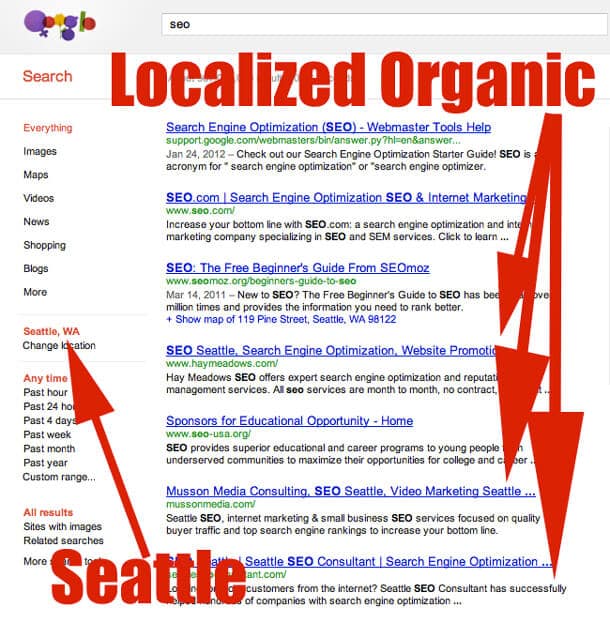February 2012 40-Pack Of Updates: Subtle Yet Important Changes
-
Aaron Gray
-
April 27 , 2023
-
4 min read
The team released their monthly recap of the tweaks they implemented for the search engine; one of which was codenamed Venice. It had a significant impact in improving location-specific results displayed for each user which may have served as a foundation for Google’s current services focusing on helping entrepreneurs reach clients in nearby areas.
What’s It For
Venice is part of the monthly changes announced by Google; specifically for the 40-pack updates in February 2012. This particular update involved improvements to ranking for local search results and enhanced the triggering of Local Universal results by using the primary results ranking system as a signal.
Other updates include:
- Related Searches – The launch incorporated a new data source to facilitate the generation of the “Searches related to” section of the SERPs. It can help users refine their searches to get the most relevant results.
- Sitelinks – There were two changes for sitelinks. The first involved adjusting a signal that identifies duplicate snippets while the other enables the search engine to get sitelink descriptions from the page content instead of the query.
- Autocomplete – Google refined the algorithms to implement the policies regarding autocomplete for offensive and inappropriate search terms.
- Thumbnails – The 40-pack of updates included an adjustment on the thumbnail size for most image content that show up on the results page. With this, the pictures now have a consistent look across all results and devices.
- Indexing – The team changed the signals used for document tracking algorithms.
- YouTube – Predictions ranking for YouTube now incorporates results that are locally relevant.
- Synonyms – They also launched an improvement that was previously rolled out for English searches which displayed relevant pages that include synonyms for user queries.
- Image SafeSearch – The detection of adult content in Image Search was improved and aligned them more closely with signals for other search results.
- Freshness – Google disabled two query freshness classifiers and incorporated new signals for search results. Google has also tweaked its Image Search signals to display more recent photos as soon as these go live to emphasize its focus on up-to-date content in any medium.
- Link Evaluation – The developers retired a link analysis method that they’ve used for several years to keep the system clean, maintainable, and understandable.
- Spam Protection – They found weaknesses in spam protection measures and fixed the issues.
What Were Its Effects
Venice had a significant impact on boosting the importance of local search for SEO. It may have been the foundation for Google My Business, which allows business owners to list their company on the search engine to display first-hand information that they want their customers to see. This service has a tremendous impact in helping entrepreneurs expand their reach to the clients closest to them geographically.
What It Means for You
Local SEO continues to be relevant today. It’s essential because not everyone has the same reach as national brands. With local search, you can gain leverage in your particular area and get the customers near you. It’s all about putting your business on the map and making it easy for potential buyers to discover your company. This tactic is so crucial that even if users don’t include a geo-modifier, they can still get localized results.
Here are a few ways to improve your local SEO rankings:
- Take Keyword Research Seriously – You need to put in a lot of thought and effort into the keywords that you’re going to use for your brand. Put yourself in the shoes of your target audience and think about the search terms they’ll type in their query. You can also include your location. For instance, if you’re a shoe repairer in Manhattan, New York, you can use the keyword “shoe repair manhattan new york.”
- Optimize Your Entire Site – It’s imperative that you make it clear to visitors what your company name is, where you’re located, and how they can contact you. Optimize your home page to show these details as well as your Contact Us page which is another vital section of your site. Additionally, incorporate relevant keywords in your content.
- List Yourself on Google My Business – Google My Business is an online service explicitly created for entrepreneurs. It was rolled out to give business owners more control of what shows up in the search results when consumers look up their brand. One significant feature is the infobox that pops up beside the search results which displays relevant information for your company like opening hours, location, and reviews.



